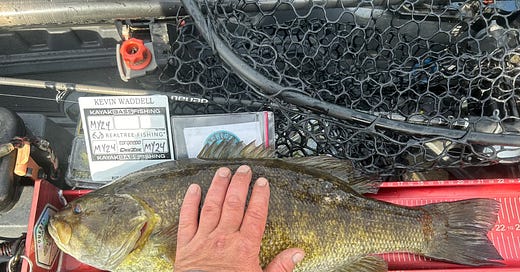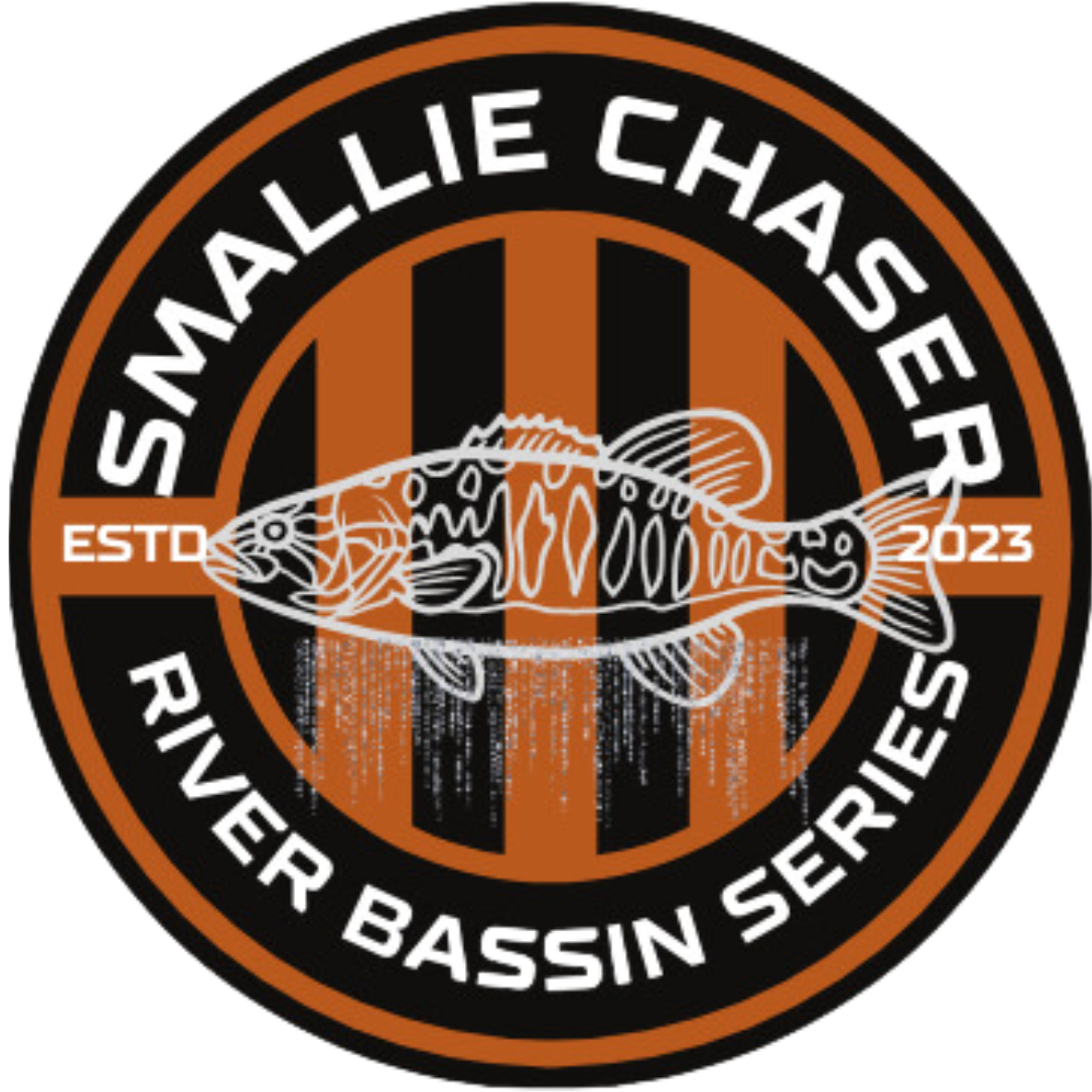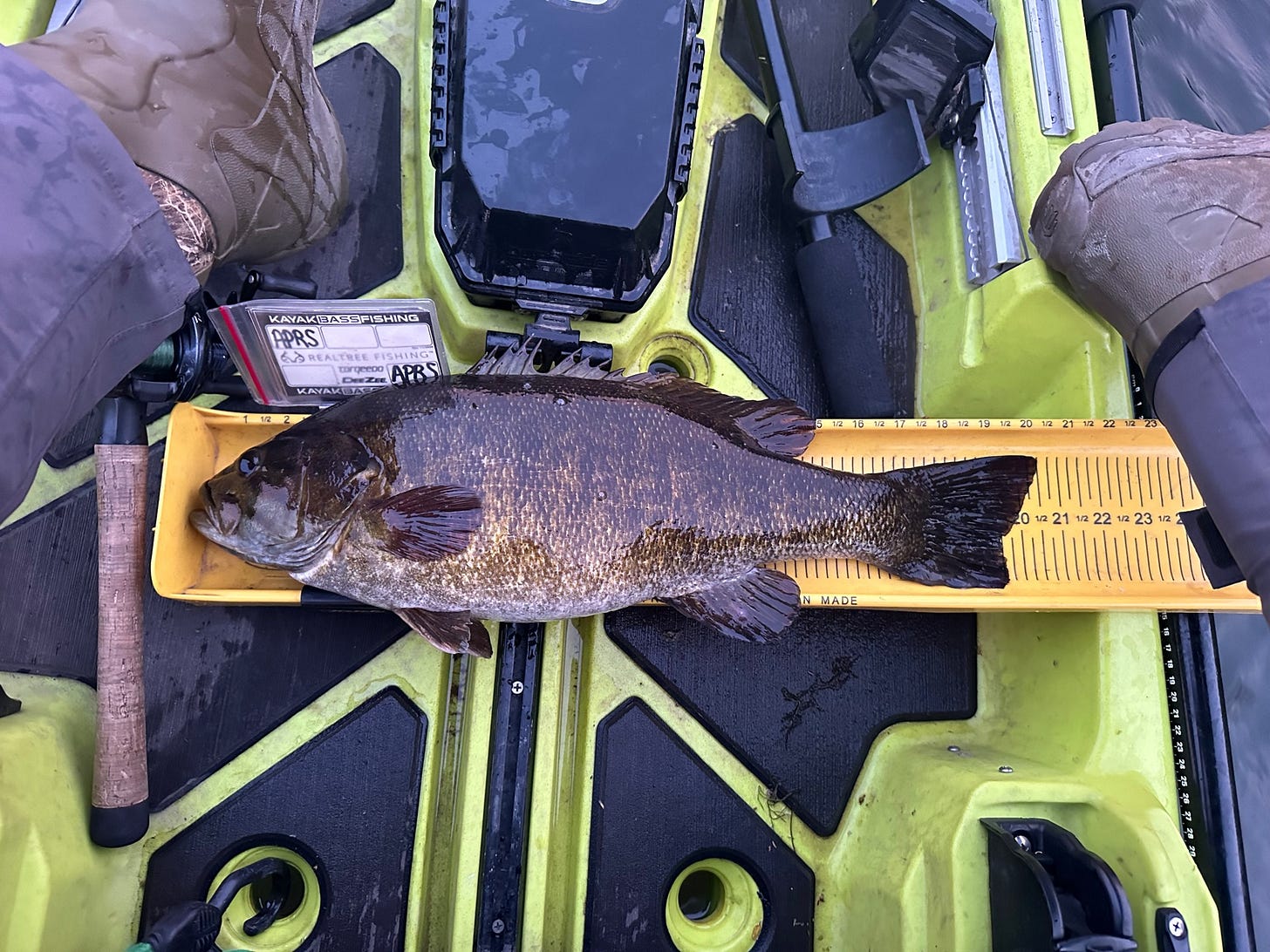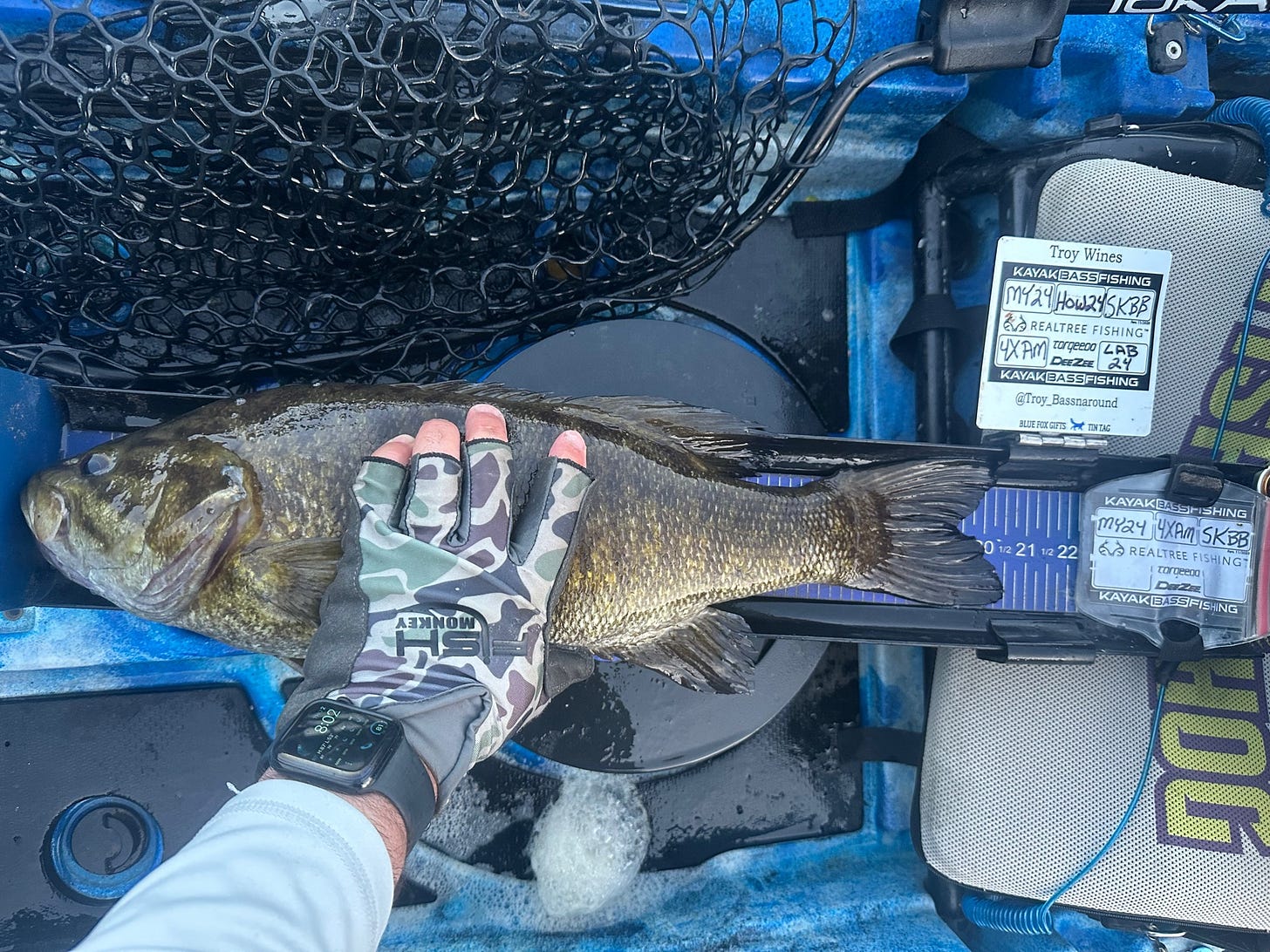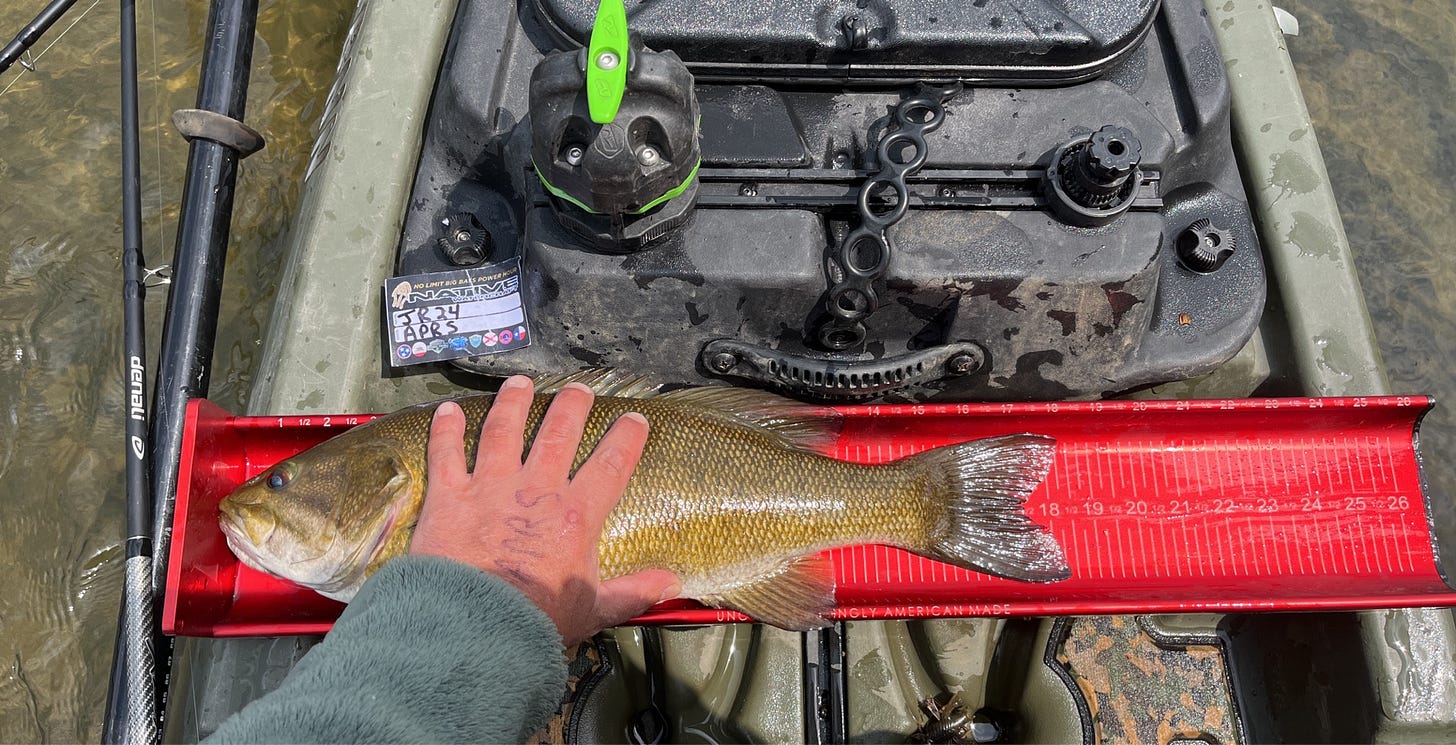Virginia Smallmouth- Is This The Year The Record Falls?
Virginia River Smallmouth Are Abundant & BIG
There have been many questions posed lately regarding the quality of the Virginia Smallmouth population and even more when reports of fish kills or environmental impacts and bacteria beset a river system like portion of the Shenandoah River. While these concerns should never be ignored it is also very important to analyze outcomes sometimes out side the surveys and biology and examine what we learn from the actual anglers that are out each and every week Chasing Smallmouth in our region.
“The record for Virginia is an 8-pound 1-ounce Smallie caught at New River by Donald S. Eaton Jr in 2003. That’s around the average state record rate across the nation for Smallies, and it’s absolutely massive in comparison to what most anglers wrestle aboard their boats. However, there is room for growth, and the record certainly isn’t unbeatable” (BassForecast.com)
That is twenty one years ago.
That outs Donald S. Eaton Jr. catch at about 23-24 inches and as we are learning thus far this year there is no reason to believe that there is not another Smallmouth out there even bigger especially in Virginia.
This recent catch below by Kevin Waddell illustrates the size of Smallmouth that can come from Virginia River systems. This smallie was just caught this week and while most believe we have yet to see the spawn in many rivers at 22.50 she could easily be pushing almost seven by end of the month.
While anglers are certainly always looking for that record catch or that citation Smallmouth, anglers also are a vital resource in actually what is happening in a river system at a very specific point in time.
Over the last year there has been alot more attention paid to Smallmouth especially in kayak bass fishing competition formats. Last summer, Kayak Bass Fishing (KBF) the largest organized community of kayak bass anglers began its Smallmouth Series where anglers from all over the country could compete against one another online in kayak fishing competitions. KBF has held three Smallmouth centric events since last summer and will now host a Smallmouth Championship beginning later this month.
Regionally, The Smallie Chaser River Bassin Community provides a window into our river systems because it acts as a window each month documenting with both catch rates and actual size for caught Smallmouth from regional river systems. Whether it is the community monthly events or the single day on specific regional river systems it highlights the quality in various rivers throughout each and every month.
We know and have come to expect any discussion surrounding Smallmouth to be about recruitment (ie spawn/birth survival rates) but one other area that gets a ton of attention both by anglers and biologists is the age and growth metrics.
Smallmouth Growth & Age:
“Age and Growth Biologists (and anglers) are always interested in how old a fish is at a given length. This is a necessary piece of information when establishing length limits on a sport fish. Years ago, we used scales for age analysis. Because scales act as fish “armor”, they become damaged or regenerated over time. This can create error in the lab, so DGIF has switched to using otoliths, or ear stones, to accomplish the same purpose. In the past 10 years, we have aged almost 10,000 smallmouth bass from Age 0 (young-ofyear) to Age 17. Table 4 gives a breakdown of average length of a smallmouth bass from Virginia rivers at a given age. Growth rates vary considerably among our rivers.” (VDWR Summary Report)
The James River Middle River has been widely accepted as the river where a Smallmouth will reach 20 inches (Citation) in length the fastest taking about ten years time. The James River Middle River is followed by the Staunton and James River Upper in terms of fastest time to citation size but many would be surprised that in testing in the early 2000’s it was found that Smallmouth in the Main Stem of Shenandoah River grow much faster than both the North Fork and the South Fork Shenandoah .
The South Fork has a great reputation for Smallmouth but in large part this can also be attributed to the fact it has more economic interests in terms of guides, river trips and rafting entities that attract thousands of people to the river every season. Another factor is many kayak fishing series over the years in Virginia and Maryland have scheduled the Shenandoah River for events BUT only permitted anglers to fish the South Fork thus once again influencing the perception of the portion of the river.
It may shock some to learn that it takes almost half as many years for a Main Stem Shenandoah Smallie to reach citation size than it does the South Fork. A VDWR study in 2008 found that it may take up to twenty five years or more for a South Fork Smallie to reach citation length whereas a Main Stem Smallie may reach that length in about thirteen years.
The percentage of adult Smallmouth in the survey conducted also was much higher on the Main Stem Shenandoah than either the North Fork of the South Fork as well. This is something I think would amaze more people to learn.
Jackson River had the lowest density of Smallmouth over fourteen inches in the study while the North Fork Holston at the time of the study has the highest concentration of Smallies over fourteen inches by far. The second highest rated for density was Staunton and Nottoway Rivers.
Not exactly rivers on most peoples radars these days for chasing Smallies right?
This dynamic is actually at the heart as to why the Smallie Chaser River Bassin Community is committed to fishing rivers only and is a dedicated Smallmouth Only event series scheduling almost every widely accepted Smallmouth river system in the region for anglers to chase Smallies.
Another major concern in the community these days is the interaction of Smallmouth with other species as well as more invasive species that are showing up in some of Virginia’s river systems.
Species Interaction?
“How do different sport fish interact with each other in our river systems? One way to examine this is to model catch rates between different species using a correlation matrix. For instance, smallmouth bass show a positive association with rock bass. In other words, where you find SMB’s, rock bass are likely to be present. This might seem like common sense to avid river fishermen, but consider the following: channel catfish have a moderate negative relationship with smallmouth bass and a strong negative relationship with rock bass. However, channel catfish and flathead catfish have a strong positive relationship. Spotted bass are highly associated with both flathead and channel catfish.” (VDWR)
These interactions will certainly impact the future of smallmouth fisheries and river systems especially the impact of Alabama Bass and more Spotted bass migrations of the invasive species into Virginia river systems. Not only will these migrations have a direct impact on smallmouth densities but it will also impact the rate of growth and the numbers of fully adult citation size fish that will be caught in various river systems in the coming years if measures are not determined to mitigate the migration of invasive species.
Thus far we have seen the migrations from North Carolina north into Virginia watersheds like New River, Staunton River and even the James River in Richmond, Va. There is plenty of reason for alarm in this regard as Roanoke, Va is home to five river systems that produce quality smallmouth today.
VDWR attributes this area of Virginia to be the best place for smallmouth bass fishing. VDWR believes that the James River is home to the most citation size Smallmouth Bass in Virginia and while we have seen plenty of that size Smallie taken there is plenty to debate in truth regarding the validity that its the top river system for Smallmouth Citations.
The truth is VDWR modeling and surveys are but one piece of the overall puzzle. They rely on electrosurveys and of course angler reporting but the reality is most citations caught in Virginia river systems go unreported.
The Smallie Chaser River Bassin Series based in Virginia has set out to test alot of the preconceived notions of smallmouth bass populations. It has scheduled events on basically every major smallmouth fishery in Virginia this year and as of May 1, 2024 the anglers in the community have registered almost two dozen citation size Smallmouth throughout its events. The Series allows anglers to fish in monthlies in specifically designated river systems only but also schedules river specific events once or twice a month on Saturdays.
Recently, the Series fished the New River and the event registered (4) Virginia Citation Smallies measuring twenty inches or more. The longest was caught by Virginian Kevin Waddell with a 20.75 Smallmouth during the event on March 30, 2024.
In the Series March Monthly for example, (20) Virginia Citation Smallmouth were caught from five different Virginia river systems. (228) Smallmouth were caught during the month by the 24 anglers that fished the Series event for the entire month. Angler Thomas Cox (Va) caught five smallmouth measuring 101.50 inches with his longest being 20.50 (3) and a 20.25 and 19.75 to complete his smallie five fish limit.
The Series than followed up with an April monthly where once again over a one hundred inches was caught.
Many of the Smallmouth being caught in the Smallie Chaser River Bassin series are being caught in the very rivers systems that the VDWR identified as the top locations but increasingly this is not always the case. A few rivers that the VDWR has not modeled very well seemingly if you take into consideration the catches being made today versus a few years ago are the Rappahannock ,Rapidan, Maury systems and also the Dan River.
VDWR lists the James River, New River, Roanoke River and Staunton River as its top river systems for smallmouth as of 2022 but of course these things are always very fluid. The Upper Potomac fishery is on the mend and producing citation size smallies for the first time in years once again and the Main Stem of the Shenadoah is as well.
Some anglers across Virginia provide data to the VDWR through the Angler Recognition Program which is an online resource for anglers but also a kind of tracker for species being caught but of course its purely voluntary and not not all anglers reveal exactly the location of where they caught their citation.
There is a direct correlation between the modeling and the program in terms of the stated top river systems as if you review the April 2024 submission to the Angler Recognition Program on two citations came from rivers that the VDWR has not designated as the top few with the most coming from the New River. The program recorded some fourteen river citations for April. In march the program recorded nineteen but in March the citations had quite a few more river systems outside the top rated smallmouth systems of 2022 by VDWR.
One such river not making the list of the top river systems for smallmouth in 2022 was the Maury River. The Maury is quickly becoming a destination for smallmouth and rock bass in Virginia and the recent Smallie Chaser River Bassin Series Upper James River event on April 27, 2024 which included portion of the Maury saw two anglers register more fish and ultimately longer fish totals and Upper James. The longest smallmouth in the event did come from the James River caught by Virginian Troy Wines of Lynchburg but both Thomas Godby (WV- winner) and Chris Johnston (VA- 2d place) finished ahead of Troy Wines (3rd place) .
The Series is already off the a quick start in May as the pre spawn moves into spawn for many river systems in the region. A few anglers have already registered Virginia Citations for May like Kevin Wadell’s pictured at the top of this article measuring over 22 inches along with other anglers fishing multiple river systems in Virginia.
All of the fish pictured in this article are from the Smallie Chaser River Bassin Series events this Spring including these citations caught by Shane Crawford, Todd Cox and Troy Wines.
The population density of 18-20 Smallmouth is probably at the best levels we have seen in over a decade. Much of this as to do with recovering habitat in many river systems in terms of grass but also in terms of better water clarity overall. Here are a few caught just this last week by Kevin Wadell, Thomas Godby , Chris Johnston and Tyler Fiorda:
This class size appears to be doing extremely well if the results of the Smallie Chaser River Bassin Series catch rates are to be considered in evaluating the river systems given the number each month continues to rise in terms of catches in the 18-20 and the 20+ range for Virginia Smallmouth.
Monitoring the river systems is always something that must be undertaken but all in all thus far the rivers are producing higher catch rates on balance than recent years. Now of course there may be scenarios or situations that conditionally may be impacting one river or another but overall the state of the Smallmouth in Virginia is strong and on balance rivals any other region in the country in terms of river smallies.
Over twenty years ago the Virginia record Smallmouth came from the New River and by all accounts the New River is still producing top quality Smallmouth that rivals any other regional river system including the Susquehanna River. What the New lacks in population density compared to Susquehanna if more than makes up in size and quality but there are certainly even more opportunities to day for the record to fall on other river systems or even a Virginia lake as well.
Reference Resource:
https://dgifwebtest.gooutdoorsvirginia.com/wp-content/uploads/smallmouth-bass-rivers-report.pdf
Facebook Groups:
Smallmouth Army:
https://www.facebook.com/groups/1322144201945490
Smallie Chaser River Bassin:
https://www.facebook.com/groups/885248796934955
Smallie Chaser River Bassin is listed on the TourneyX fishing app.

